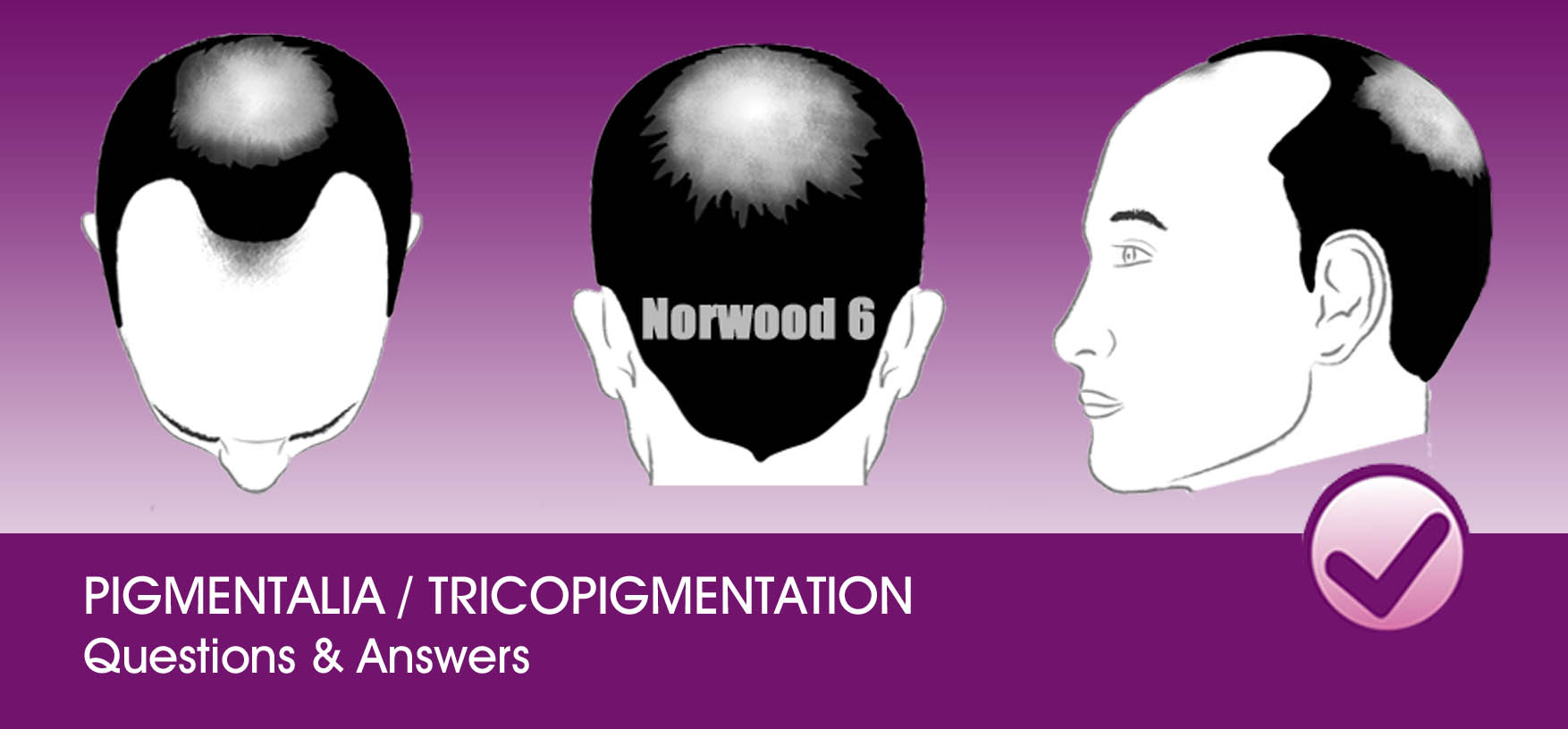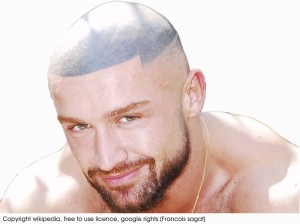
Redeem Clinic
With such a life changing procedure, there are inevitably many questions. On this page we have attempted to answer the top ten questions asked by our client prior to attending on of our FREE consultation in which many more questions can be asked and frank , honest advise and answers given by our qualified expertise staff. Find out why our Scalp Micropigmentation / Tricopigmentation services can not be described as a simple traditional Hair tattoo. In no particular order here are our clients top 10 questions and answers:-
- What is Tricopigmentation /Scalp Micropigmentation?
Tricopigmentation is the procedure of introducing quality shaded pigments into the epidermis layer of the skin to replicate natural hair follicles. The ink is introduced using a specialised digital micropigmentation gun utilising some of the finest needles found within the industry. Scalp micropigmentation only differs in that the pigments are inserted deeper into the dermis layer or skin.
The technique relies on a highly-trained practitioner’s skilled in the use of precision needles and advanced skin pigments to colour the upper/lower layer of the skin (the epidermis/dermis respectively). As the skin in the epidermis gradually replaces itself, over time the pigments will gradually exfoliate over time resulting in Tricopigmentation being semi-permanent * in nature, where are the same does not occur with the dermis layer of the skin resulting in Scalp micropigmentation treatments becoming permanent in nature.
- How does Tricopigmentation differ from traditional scalp micropigmentation and hair tattoo?
Primarily the main difference between Tricopigmentation and scalp micropigmentation is that the pigment for Tricopigmentation is only inserted into the epidermis layer of the skin, whereas with scalp micropigmentation or hair tattoo the pigment is inserted into the dermis layer of the skin. Pigment inserted into the dermis layer of the skin works very much the same as a traditional tattoo in such way that the pigment stays permanently in the skin. The issue with the latter is that over time you can find that the inks in the dermis layer of the skin ‘bleed’ a little which results in blurring and consequently move away from the appearance of a natural hair follicle. Also being permanent hair tattoo represented follicles are not adaptable and without intervention (laser removal) cannot altered over time to match the naturally aging hairline.
- Does the Scalp Micropigmentation / Tricopigmentation treatment Hurt?
The average SMP / Tricopigmentation client would describe the procedure as a little uncomfortable yet not as painful. The treatment uses some of the finest needles available in the market place today and as such the individual intrusion into the skin area is minimal. With Tricopigmentation the needles only enter the epidermis layer of the skin and consequently is often described as more comfortable than scalp micropigmentation. Topical creams and ointment is often used to cool the scalp and reduce levels of discomfort.
- Do the pigments used in Tricopigmentation / Scalp Micropigmentation change colour over time?
No the pigments used in the process of Tricopigmentation do not change colour over time. The colour of the pigments can fade back over time, however there in no change to the principle colour used. Also the pigments used for Scalp micropigmentation within Redeem clinic are predominantly charcoal based, natural organic pigments, which have absolutely no history of colour change either. Sometimes Tricopigmentation inks are confused with cheap semi-permanent makeup pigments used in the beauty industry which can often will change colour over time. Also a traditional tattoo artist can sometimes mix pigment colours when looking to achieve the final colour for their hair tattoo. The pigments used for our Tricopigmentation / Scalp Micropigmentation treatments are not mixed colour pigments, have been specifically designed for these unique service and do not change colour (as with all Pigments used within the Redeem clinic services).
- Can the pigments used in Scalp Micropigmentation / Tricopigmentation match my natural hair colour?
Yes, unlike many scalp tattoo pigments that can use a single graphite based pigment within their treatments the specially designed pigments used within Redeem Clinics Scalp micropigmentation / Tricopigmentation treatments can be adjusted to match the shade or colour of the clients natural chosen hair colour. The exception to the latter are clients who have ginger/red or very light blond hair which unfortunately cannot be matched.
- How long does a Tricopigmentation / Scalp Micropigmentation last?
The average initial Trico treatment can last from 1-2 years, yet with regular top-ups Tricopigmentation treatments can last a lifetime. After one year the treatment will usually start to fade back due to the natural exfoliation effect in the epidermis layer of the skin, so with top-up treatment new bright pigments can be re-introduced to keep that perfect follicle look.
As Scalp micropigmentation pigments enter the Dermis layer of the skin the inks can stay in place for a life time, however in reality when the inks are inserted into the skin some of the pigment enters the epidermis layer or the skin also and consequently will be removed from the skin over time, add to the fading effect of UV sunlight then normally it is advised for a client to seek a top-up between 3-5 years to ensure a crisp natural look.
- What happens if in years to come if I decide I no longer want the shaved hair look or want to change my hairline style?
The beauty behind Tricopigmentation treatments is that they are semi-permanent* in nature and if desired after several years with no top-ups the scalp will return to its natural unblemished state. This said in most cases the client will just let the hairline recede back to a natural state throughout their aging process whilst continuing with their regular top-ups. The latter ensures a completely 100% realistic hair result for all of our client and for those that want to retain a youthful hairline for longer then there is no need to let the hairline recede back.
Scalp Micropigmentation is permanent and as such could be said not to be as flexible as Tricopigmentation treatments. One of the benefits of choosing a scalp micropigmentation treatment with Redeem Clinic is that we also have a tattoo removal arm of the business that has been removing permanent pigment from people skin for years. With the latter in mind Redeem clinics tattoo removal technicians are highly skilled and more than capable of removing ink to the scalp should a client look for change in the future.
- What is ‘Helmet Head’ and can this happen with Scalp Micropigmentation / Tricopigmentation treatment?
Helmet head is where a technician either uses too thick a needle, enters the pigment follicles into the scalp too deeply resulting in ink migration or following a top-up treatment new pigment is introduced too close to existing pigment. The latter ultimately giving a very unnatural hair follicle appearance or the blacking out of entire scalp area. The unique tools used with the tricopigmentation treatment process have been designed to eliminate human error with regards to dexterity and over population of hair follicle to the scalp. This said a fully experienced and qualified Tricopigmentation technician soon learns the correct amount of spacing and hand pressure needed to ensure fully natural looking follicle replication, that ensures pigments are not entered too deeply into the skin or are spaced too closely together (it is also imperative to have very fine needles to ensure the spot sizes are not too large and as natural as possible). Such artist within Redeem Clinic, once honed in the art of Tricopigmentation then adapt these skills (with relevant additional training) into the art of Scalp Micropigmentation, ensuring once again that only truly realistic hair follicle representations are achieved (which are correctly spaced and never too deep). By utilising the ‘cross discipline’ technique within SMP where the majority of pigment is permanent, yet some is also fades or is remove naturally from the skin then this ensures any topup pigments can be inserted into ‘open area’ to ensure there is not an over densification of the area and consequently no risk of ‘helmet head’
An example of a tattooed scalp ‘Helmet Head’ (by others of course) is as below.
- How do Scalp Micropigmentation / Tricopigmentation costs compare in relation to Scalp micropigmentation and Hair Transplants?
From the ‘Cost – Male & Female’ page on this site you will see that Tricopigmentation initial treatment costs are cheaper than the Scalp Micropigmentation costs, however it is true that there is a requirement for more top-up treatments withTricopigmentation than with SMP and over the years this shows a slight reduction in costs towards SMP (this however excluded any additional laser removal costs should the client which to adapt their SMP to a different style). Costs below are based on a 21 year example period for both Scalp Micropignentation / Tricopigmentation against traditional Hair Transplant costs. For example:-
Treatment for a Norwood scale 6 client:- Scalp Micro pigmentation (hair tattoo) £1850 intial treatment, £1000 per 4 year top-up (x5) =SMP total £5850).
Tricopigmentation £1250 initial treatment, 6 month top-up (if required) £249, 12 month top-up £425, Each following year £212 (x 20) = Trico total £6164).
The costs for the average hair transplant Fue treatment is £7500 if we added the £35 monthly cost for the recommended aftercare treatment such as Rogainthen this gives a 21 year cost for Hair Transplant at £16320 which is considerably more expensive than a SMP/Trico
The added down side of a Fue treatment is in years to come the transplanted hair will in most cases thin as per the hairline areas it was transplanted from and as we have all seen many clients are left with unsightly hair transplant scars for the rest of their lives (we see more and more SMP now used also to cover these scars).
On the face of it therefore the cost of Trico/SMP against a traditional hair transplant comes across very favourably, with the 21 year example costs being a third that of traditional hair transplants.
- How long does a procedure take to perform?
How long generally depends on how much hair loss and which areas are to be treated? Unlike some scalp micropigmentation artists that are often carried out in a single sitting with Redeem clinics Scalp Micropigmentation / tricopigmentation procedure it is felt that in order to achieve the very best results there is a need for a client to have three sittings on average. Also by carrying out the treatment in three sitting the clients comfort levels are kept at an optimum. If we take for example a client with hair loss on a Norwood 6 scale (see cost page) then the first siting would be 2-3 hours, 2nd sitting (the next day) 2 hours and the perfection siting (30 day later) a further 2 hours. The minimum siting for an initial Scalp Micropigmentation / tricopigmentation procedure is 1.5hours.
Want to know more? Why not come for a FREE no obligation consultation. Simply click the link below, fill in your details and we’ll call you back, starting you on your journey to the ‘New You’.
*Results may vary from person to person




 *
*


